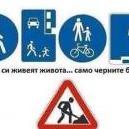Принос към доказването на българските права за Южна Добруджа
-
Теми
-
- 10 мнения
- 189 views
-
- 19 мнения
- 714 views
-
Много повече ли са били някога психопатите и социопатите? 1 2 3 4 21
От Хранислав, in Психология и Логика
- 524 мнения
- 14855 views
-
- 2237 мнения
- 103573 views
-
- 765 мнения
- 225629 views
-
-
Последно разглеждащи 0 Потребители
- No registered users viewing this page.



Recommended Posts
Напиши мнение
Може да публикувате сега и да се регистрирате по-късно. Ако вече имате акаунт, влезте от ТУК , за да публикувате.